
Imaginary Landscapes: Building Fantasy from Reality
Hello everyone, my name is Nick Pedersen and I am a photographer and digital artist currently based in the Philadelphia area. My work specializes in an intricate use of HDR imaging, photo compositing, and special effects using my own photographs. For this article I would like to talk a bit about my history as an artist, and how I got to where I am today.
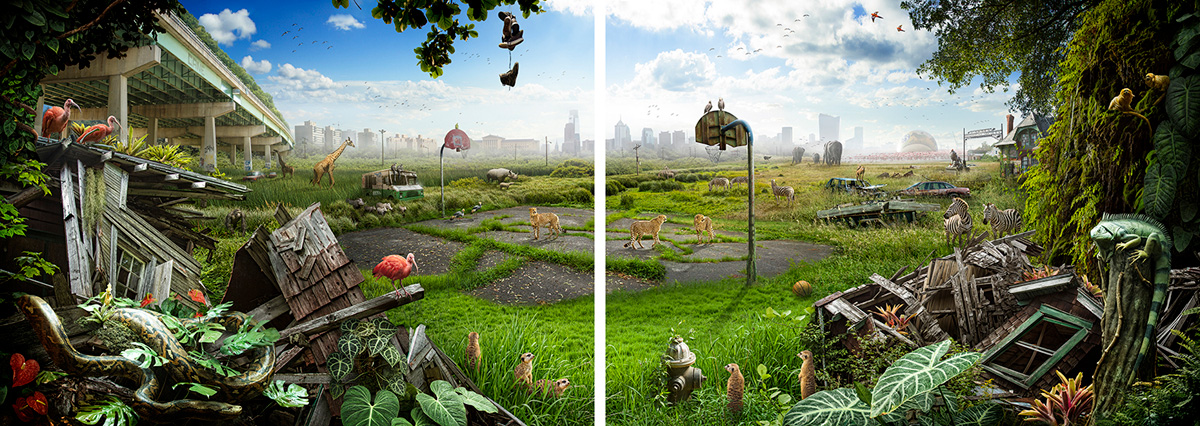
I started out in photojournalism, traveling a lot and doing more documentary style photography. Currently I work for a few photo agencies, Getty and Cavan Images, and I also take on freelance assignments, which is great to supplement my income and collect photos for my digital imaging work along the way. First and foremost, I would say my favorite part about the work I do is traveling around the US and other countries to capture the best images to use in my projects.
Early on, I learned some photo editing skills in Photoshop and experimented a bit with combining images. This series, “Migration,” was the first larger body of work I created using the style of photomontage that I use today. In my artistic work I have always been very influenced by nature and environmentalism. Conceptually this project was created in response to issues like urban sprawl and deforestation, showing wild animals wandering through the city in search of their natural habitats.
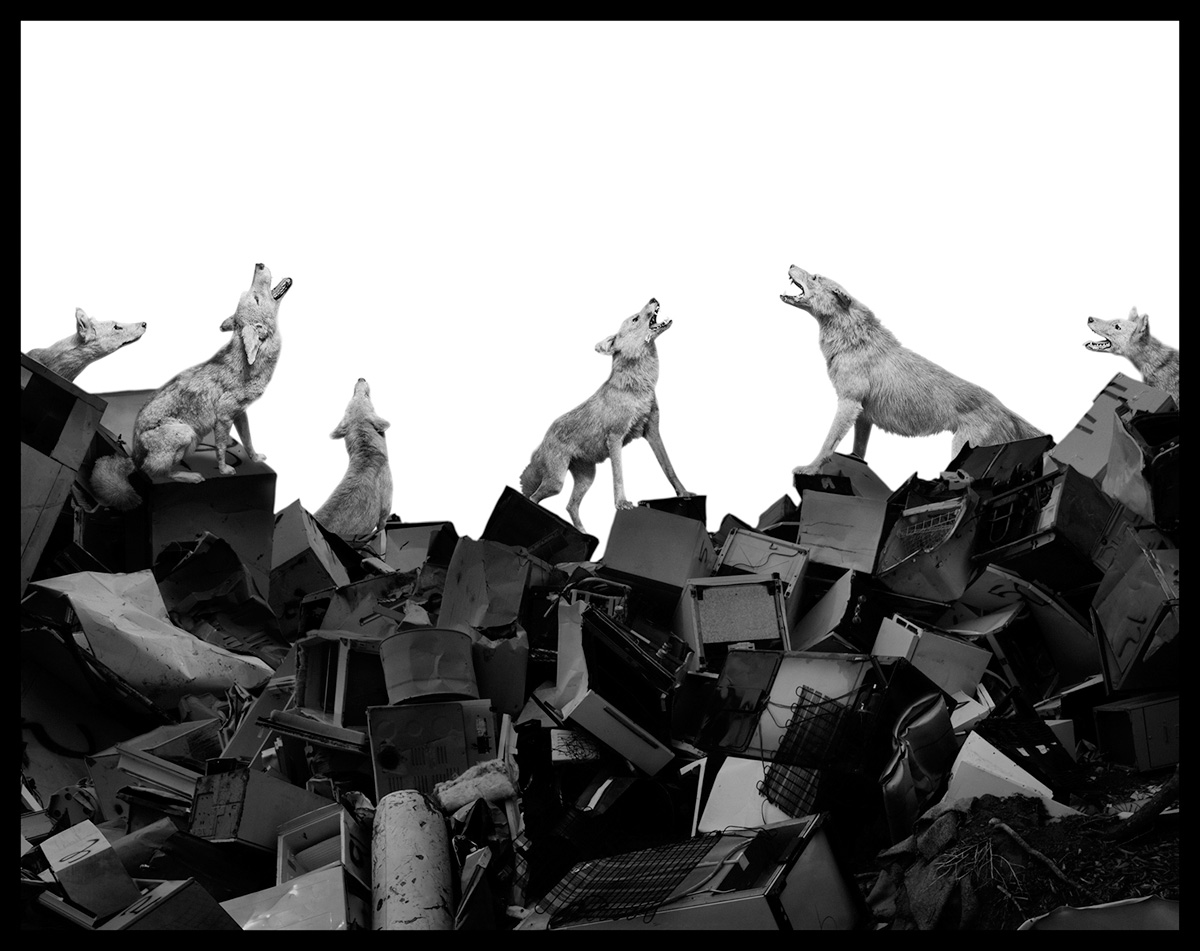
I got really into photo compositing and this whole idea that you could create something new rather than just capturing it. So, I decided to get my Master’s degree in Digital Arts from Pratt Institute in New York. I spent three years studying there. Here are some examples from my MFA thesis, “Sumeru.” This project uses the same techniques, but much more extensively, to create an entire constructed landscape in each image. The narrative was inspired by Zen Buddhism and eastern philosophy, and uses images of nature to symbolically represent various states of consciousness and perceptions. Basically, it is about an exploration of the mind. The whole series was exhibited and published in my first artist book, Sumeru.
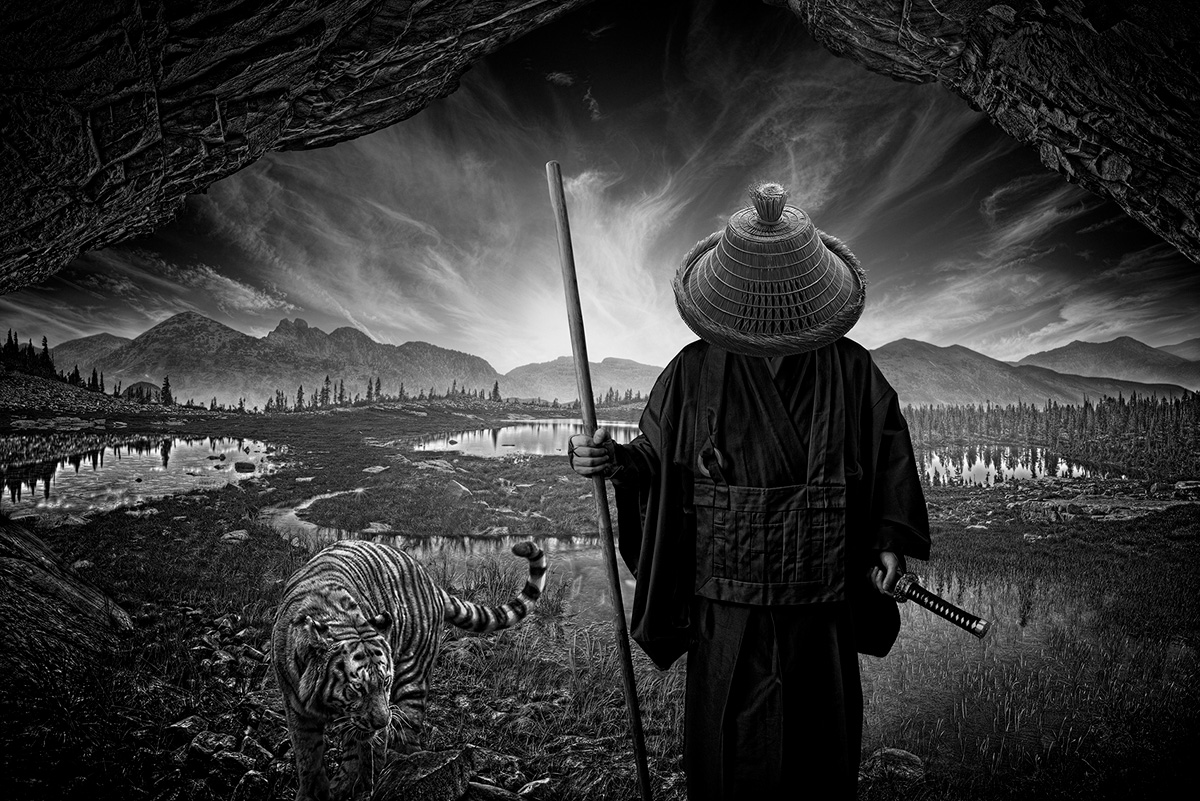
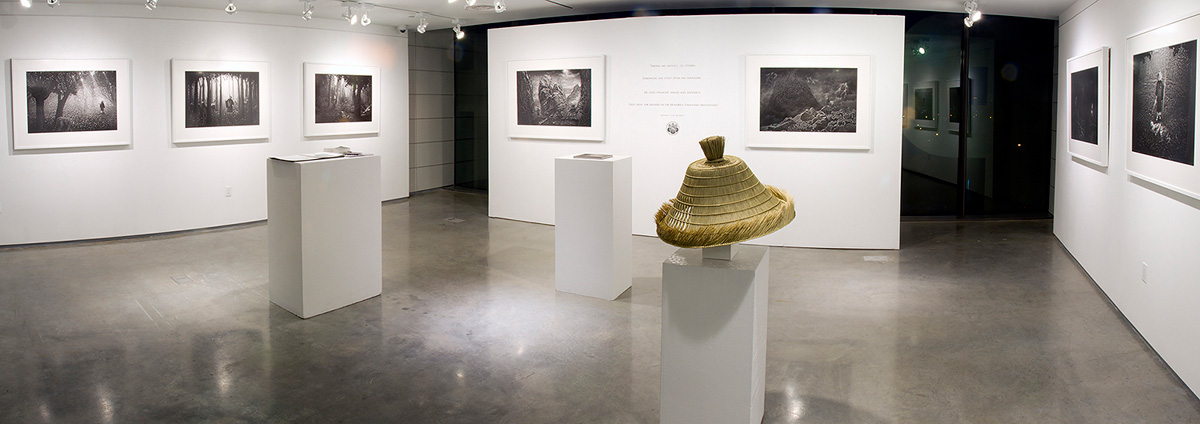
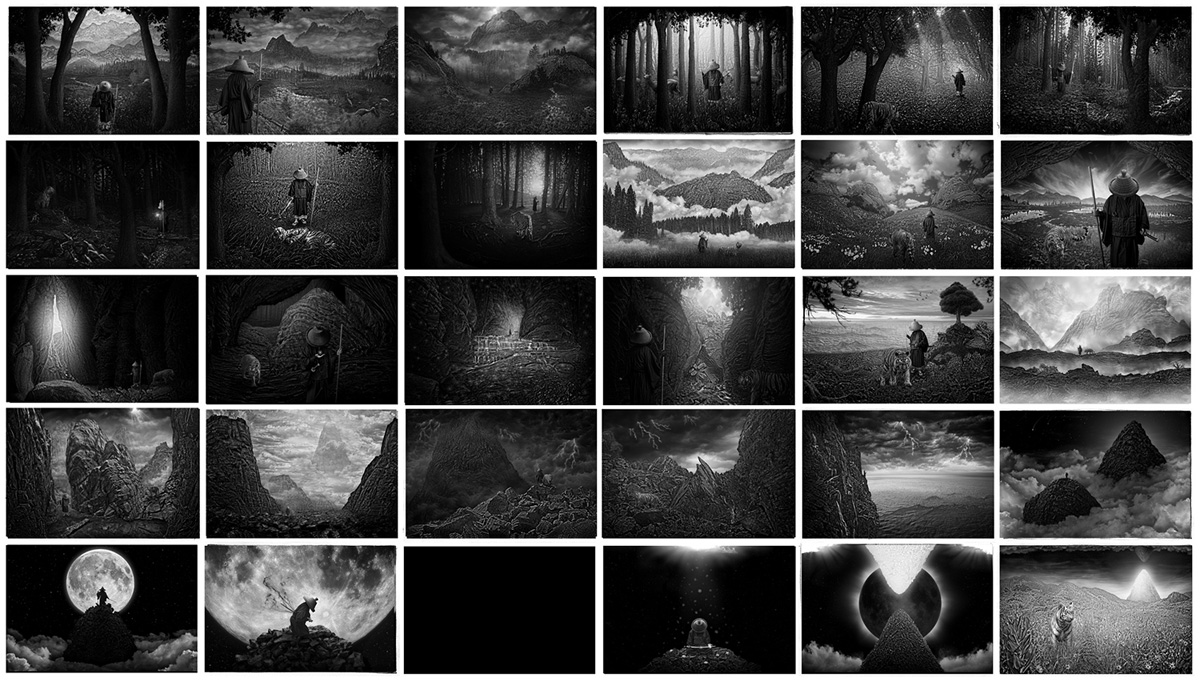
Shortly after graduating, I began working on the first part on my next major series, “Ultima.” It envisions a hypothetical future world where nature has reclaimed modern civilization. I started by taking images of cities on the east coast like New York, Brooklyn, and Philadelphia. These were perfect for collecting photos of urban decay, like buildings overgrown with vines, burned down structures, and industrial ruins. The images of animals came from the wild, zoos, taxidermy shops, and museums of natural history. Finally, the characters were photographed in the studio with lighting to match each scene. It’s a much different way to think about photography, because I am capturing different elements and creating a database of photos to use for compositing.
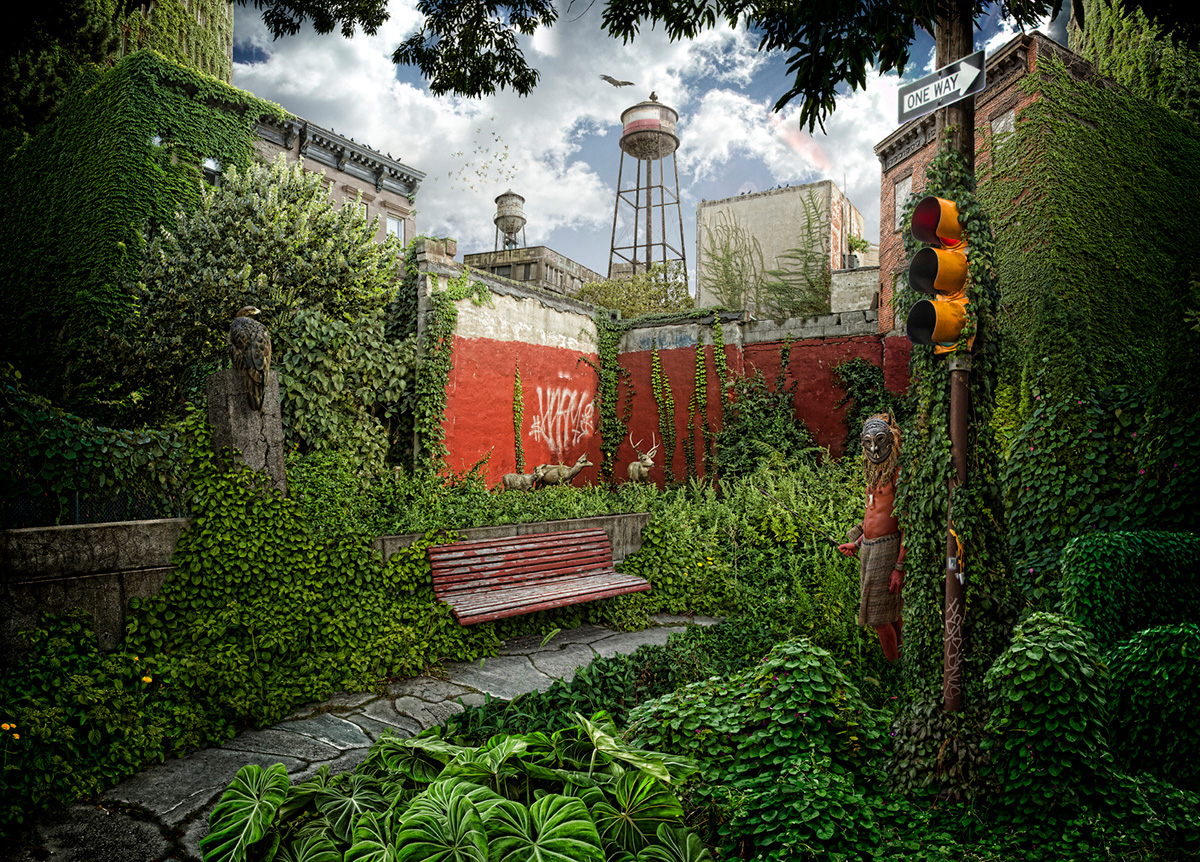
To create my images I use a complex process of digital imaging in Photoshop. Every image is actually made up of about 50 or more photographs meticulously pieced together, with each taking around 100 hours of work. So I spend a great amount of time building up an image, figuring out the lighting, shadows, color, and other effects to make it look realistic and seamless. Each image is planned out and created as an intricately layered construction, and I think that is what gives it such a hyper-real, illustrative quality.
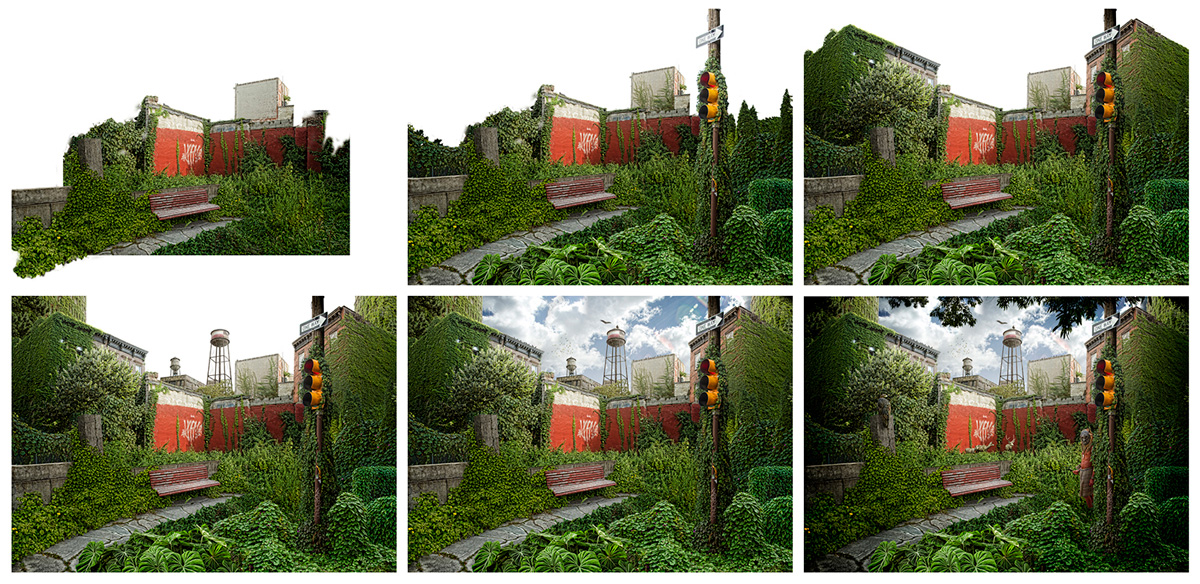
Over the next year I continued working on this project and was accepted for a few artist residencies to help get the images I needed for my ideas. The first one was at the Banff Center in Alberta, Canada, where I photographed the impressive mountains and snow-covered landscapes surrounding Banff National Park. I was also lucky enough to set up an amazing photo shoot with wolves. My next artist residency was at the Gullkistan Center in Iceland, where I spent the winter traveling around the entire country photographing the incredible glaciers, icebergs, and the northern lights to complete the second part of the series.
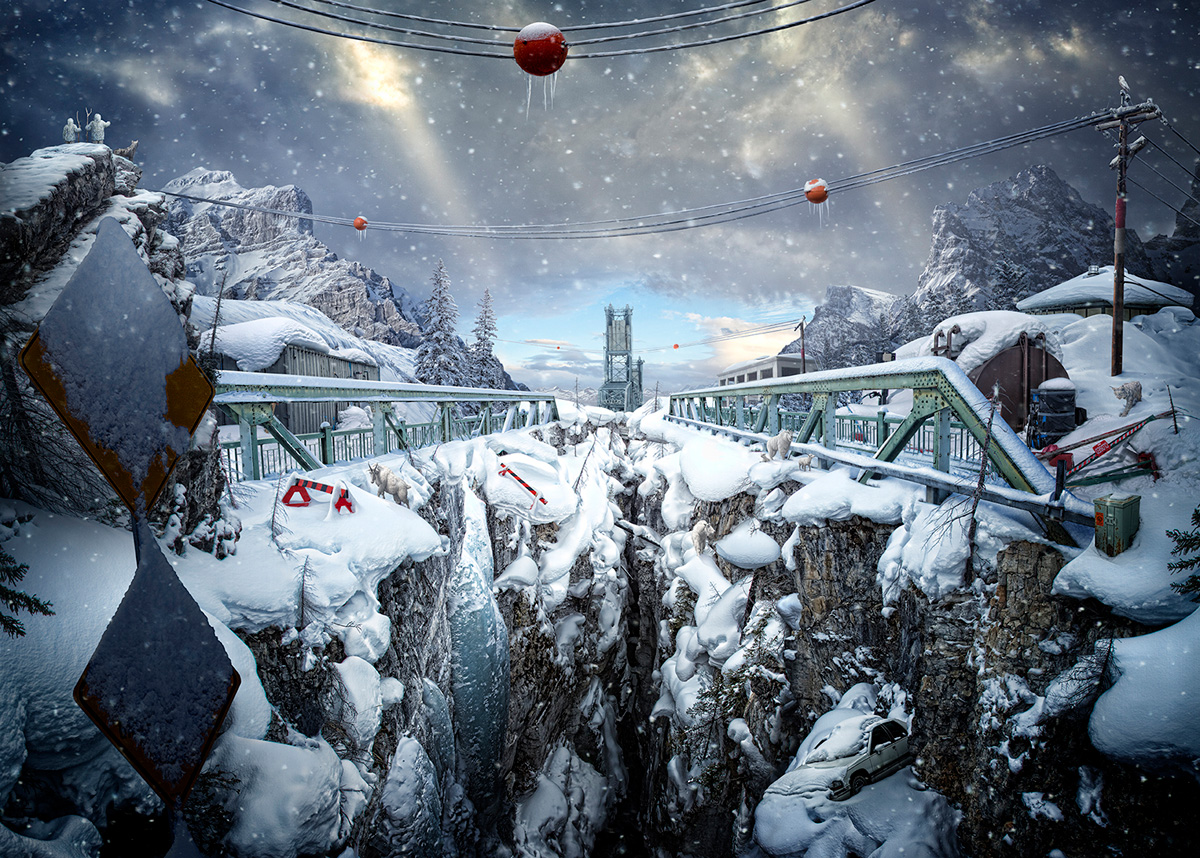
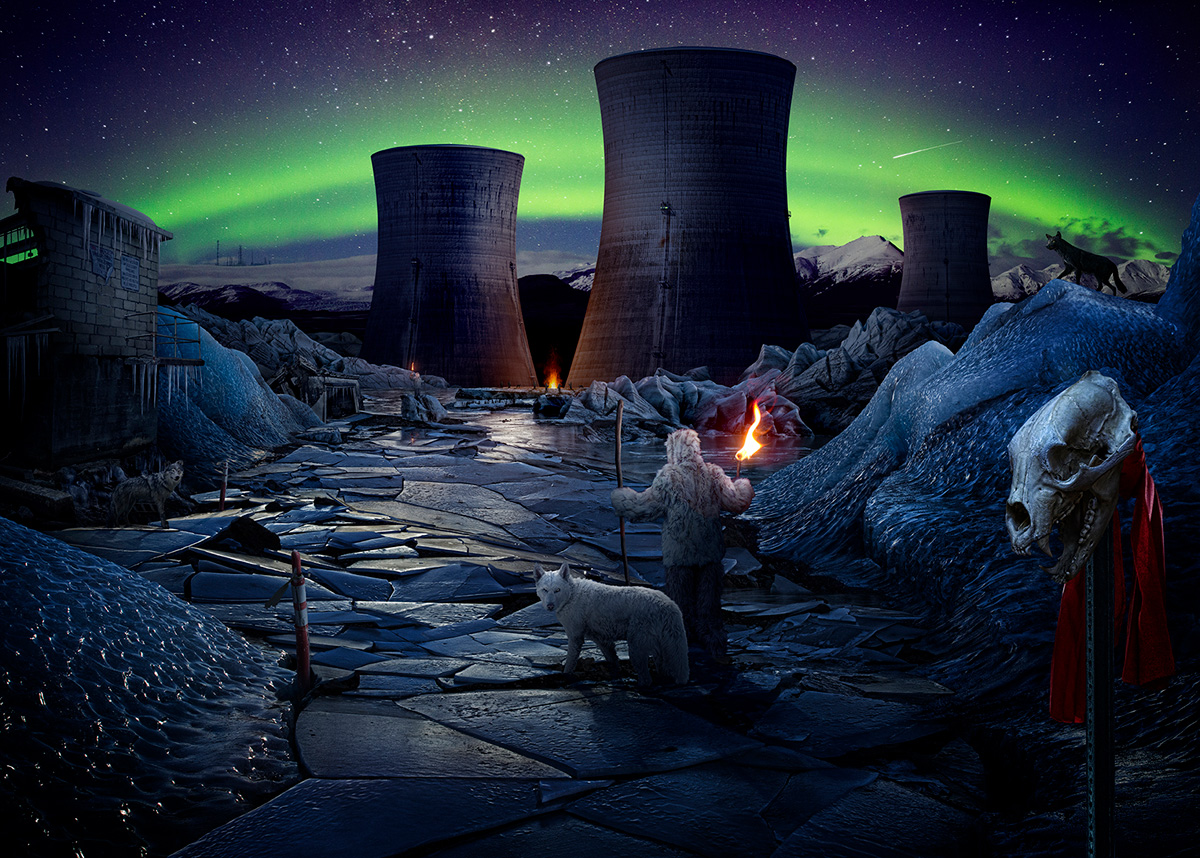
For the final desert part of the project, I took road trips all over the four corners of the American southwest. Some of the biggest highlights were the Great Sand Dunes in Colorado, the slot canyons in southern Utah, and Organ Pipe National Monument on the border of Mexico.
This entire 36-image project took me about 3 years to complete, but hopefully it shows what you can pull off with a lot of patience and dedication. After finishing the work I make large-scale fine art prints for gallery exhibitions, and the whole 3-part series was collected in my newest artist book, Ultima.
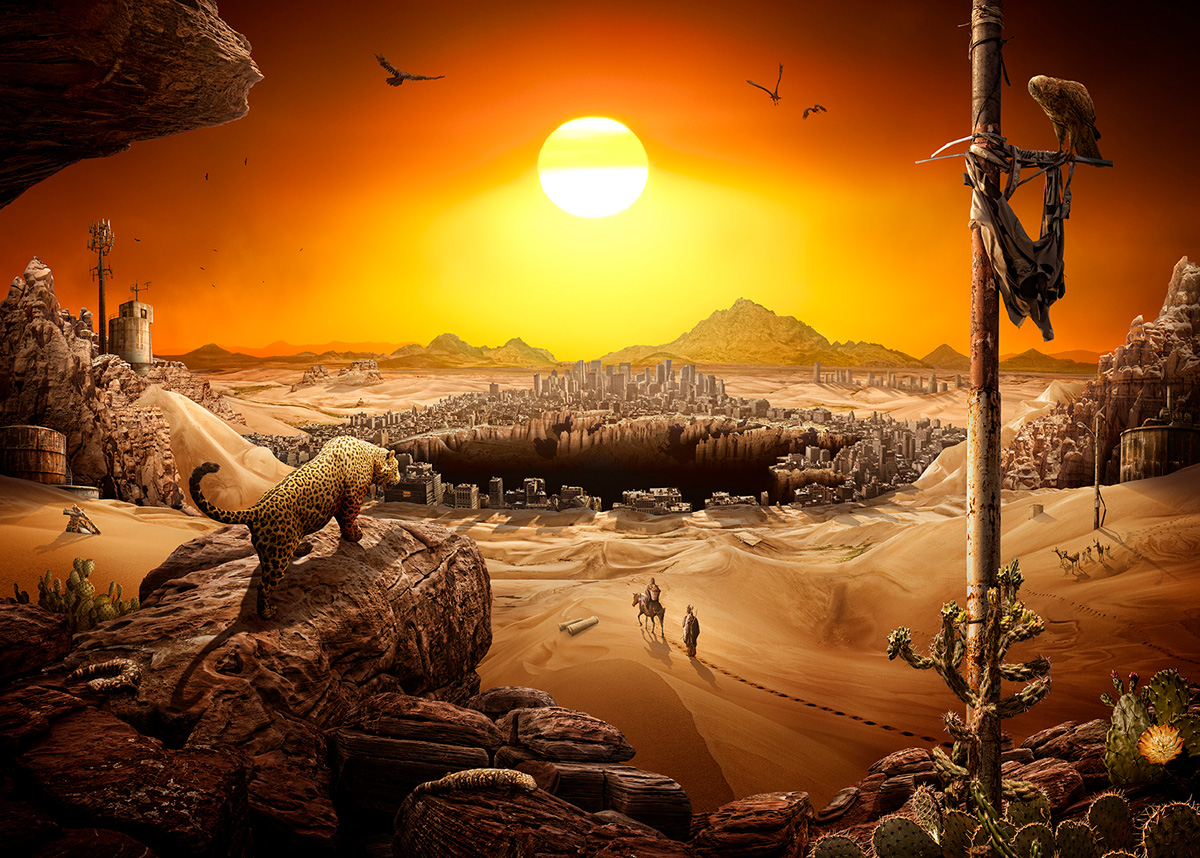
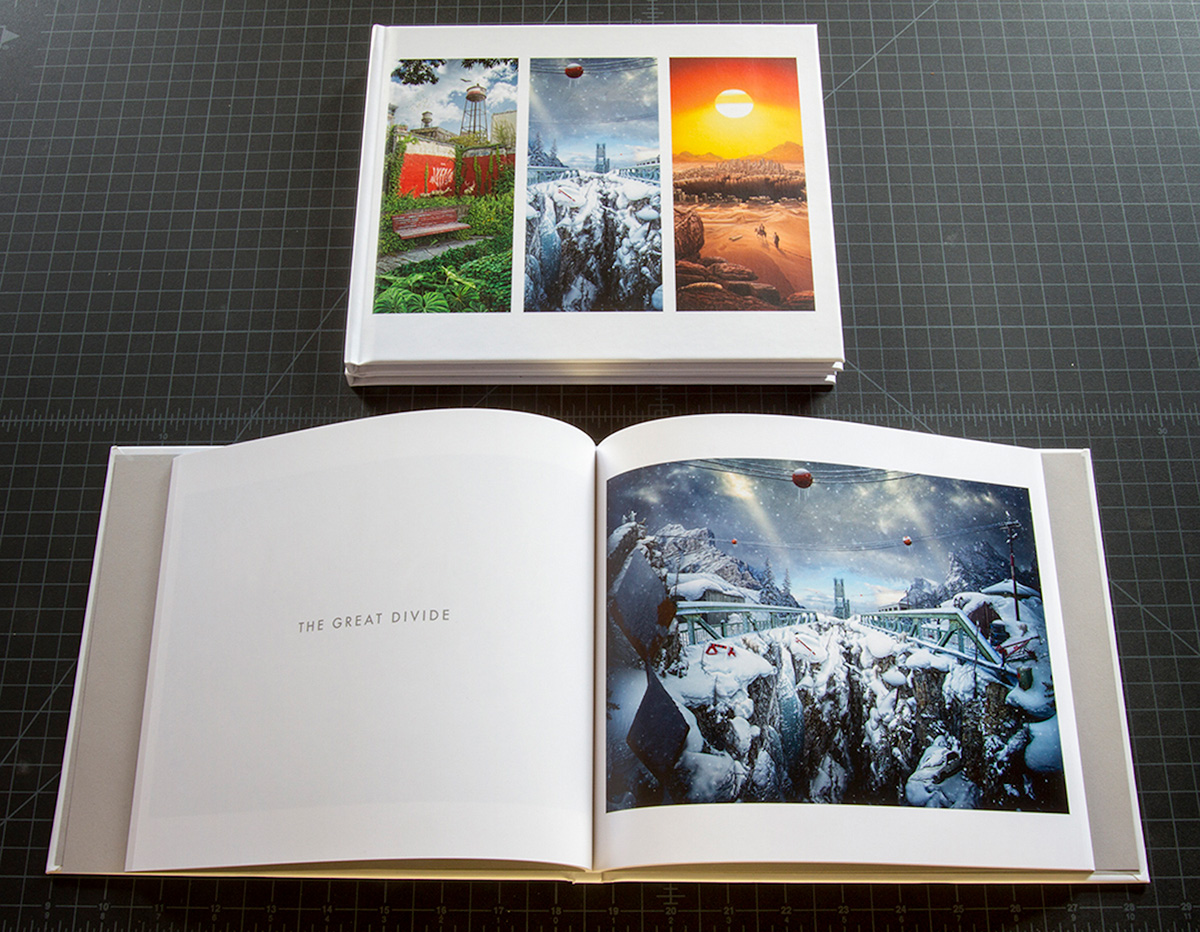
I have also done quite a bit of commercial work, like this piece “Green City,” in collaboration with the Nature Conservancy. Most of the time I have received commissions after clients have viewed my personal work like Sumeru, Ultima, and other projects, especially through social networking sites like Behance and Instagram. So, in my experience, having a portfolio of interesting personal work has really helped me to stand out, and has led to offers for the kinds of projects I want to work on. I am very interested in creating images with purpose that have a strong message, such as this piece “Water Protector,” to benefit Stand With Standing Rock.
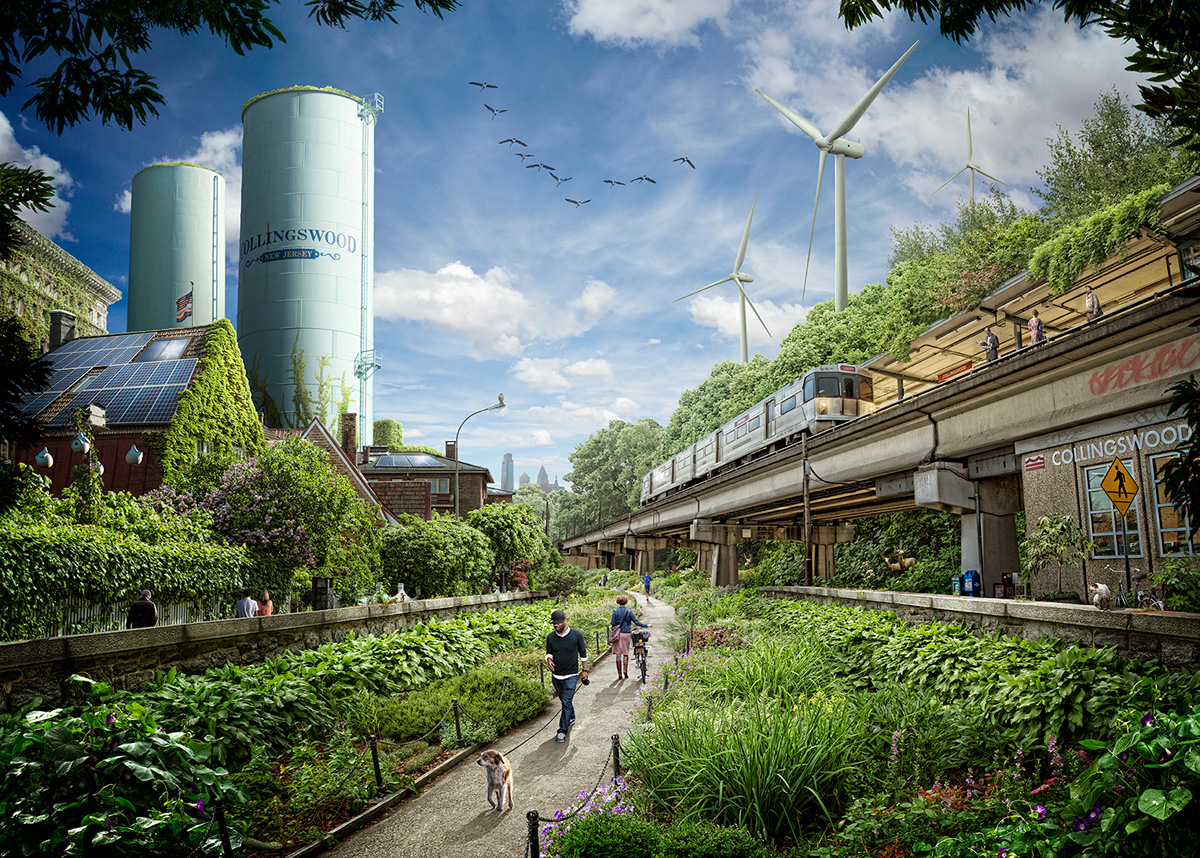
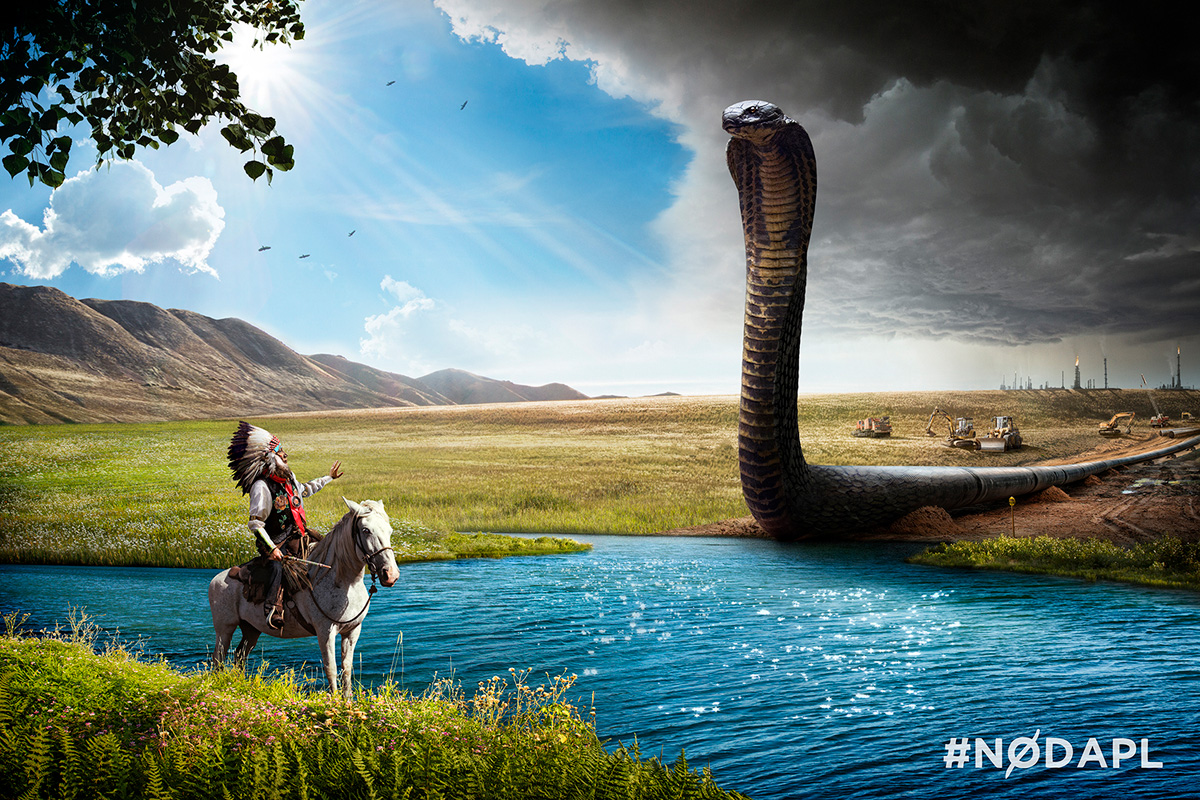
Finally, all of this has led to my newest series “Floating World,” which is an ongoing project created in response to the issues of climate change and sea level rise in coastal cities around the world. I started this body of work with New York City, and I’m currently working on images of New Orleans and Miami. Eventually I’m planning to include more images of other cities most threatened by flooding in the future. With all these environmental projects, my main goal is to raise important questions about the time we live in, and give viewers a space to think about the future of our planet.
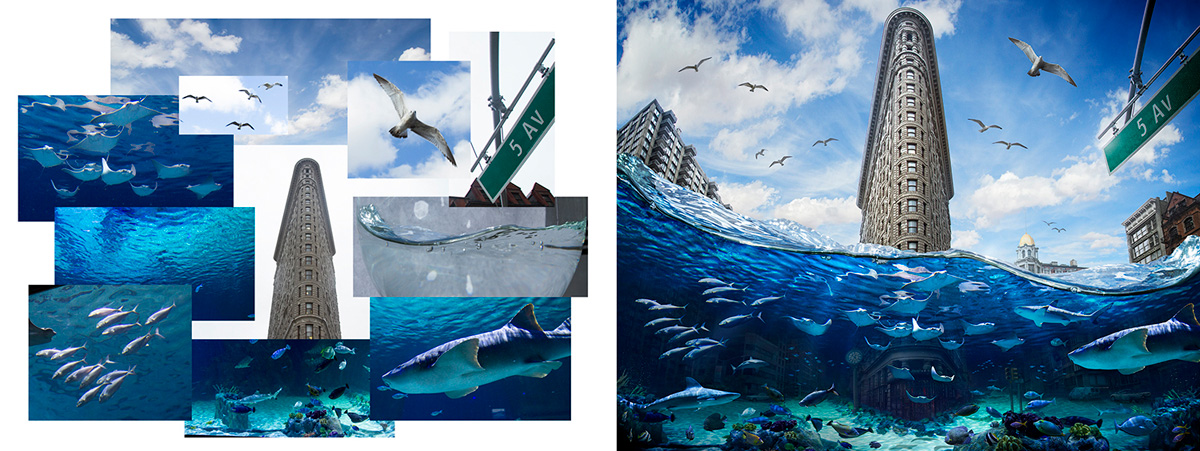
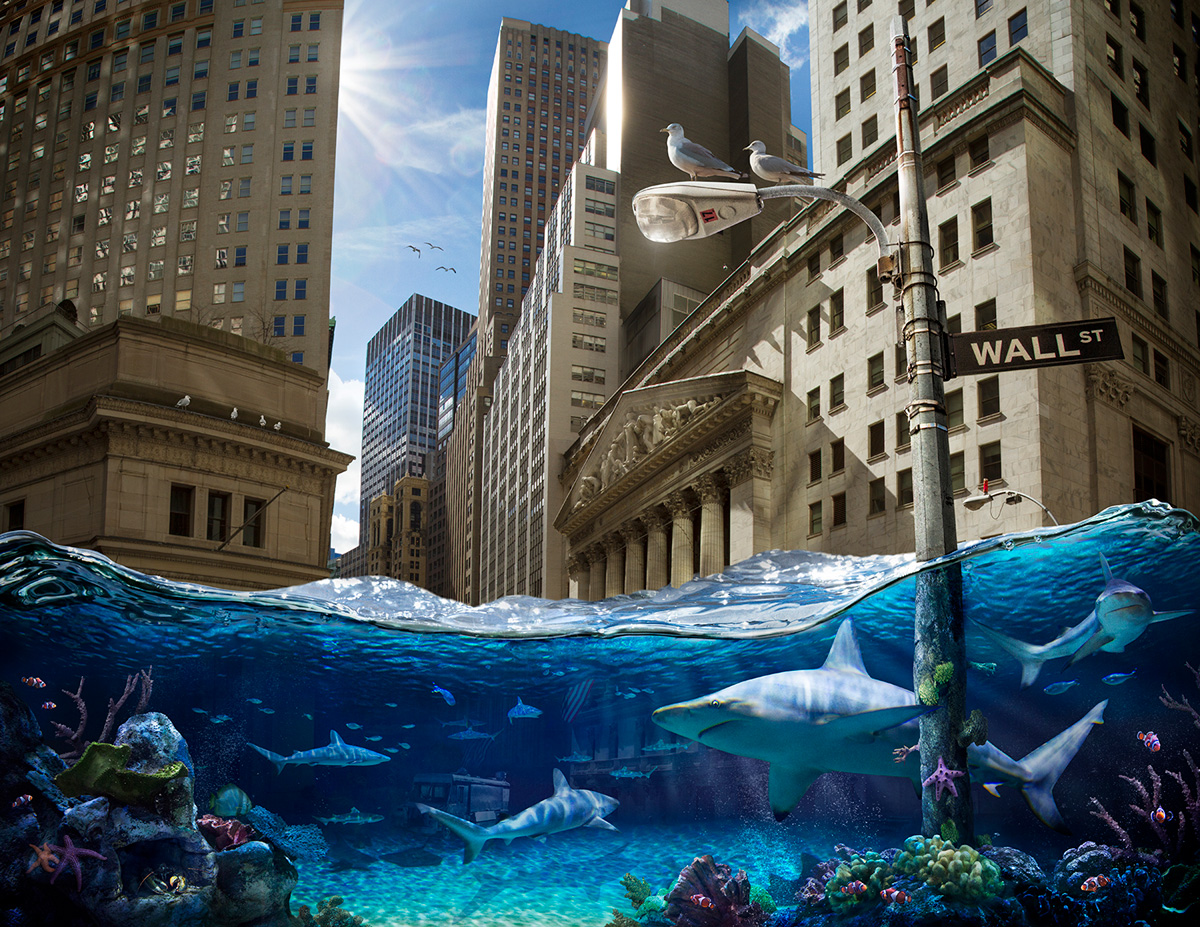
To conclude I would like to leave you with these ideas I have picked up that have been key to creativity in my artistic life, and I think would benefit anyone getting into photography and digital imaging.
1. Know your conceptual, aesthetic, and technical influences.
2. Experiment through trial and error to find what works.
3. Know your technique intuitively, like second nature.
4. Develop your own unique style to stand out.
5. Create something original and authentic.
6. Constantly reinvent yourself and your work.
7. Be exposed to new places, people, and ideas.
8. Be ambitious and take steps to meet your goals.
9. Follow your own path with perseverance.
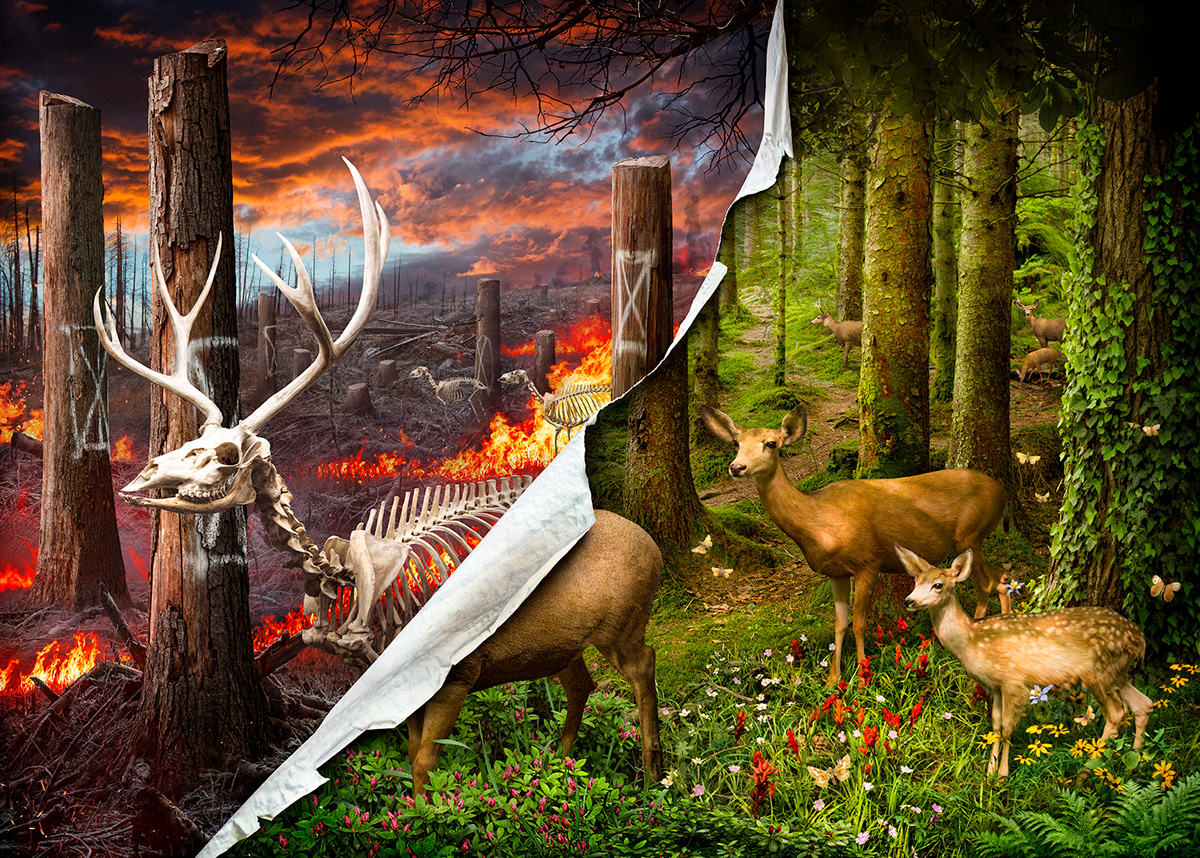
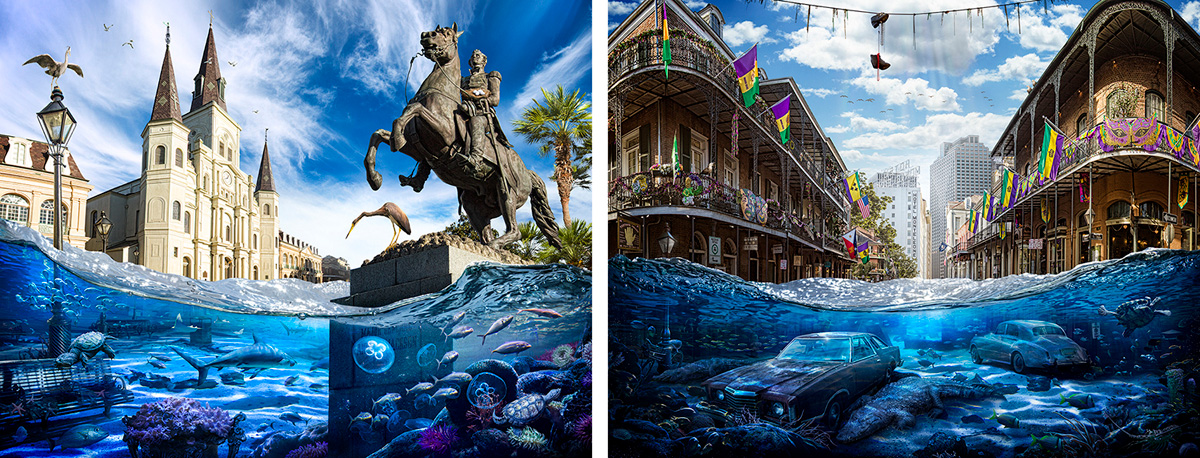
You can see more of Nick’s work at Nick-Pedersen.com and follow him on Instagram, Facebook, and Behance.



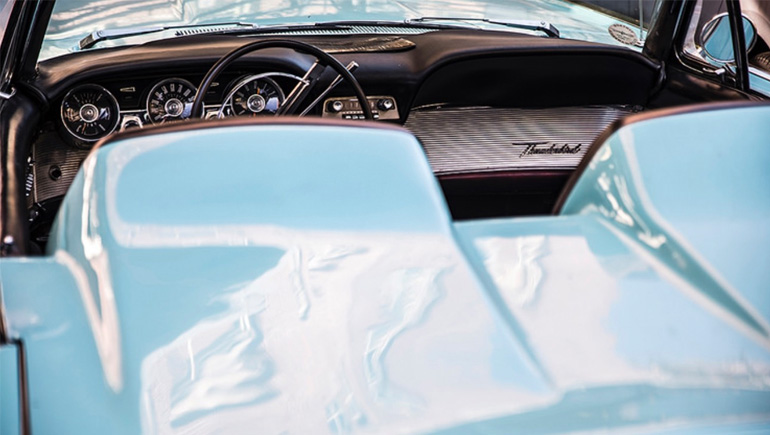
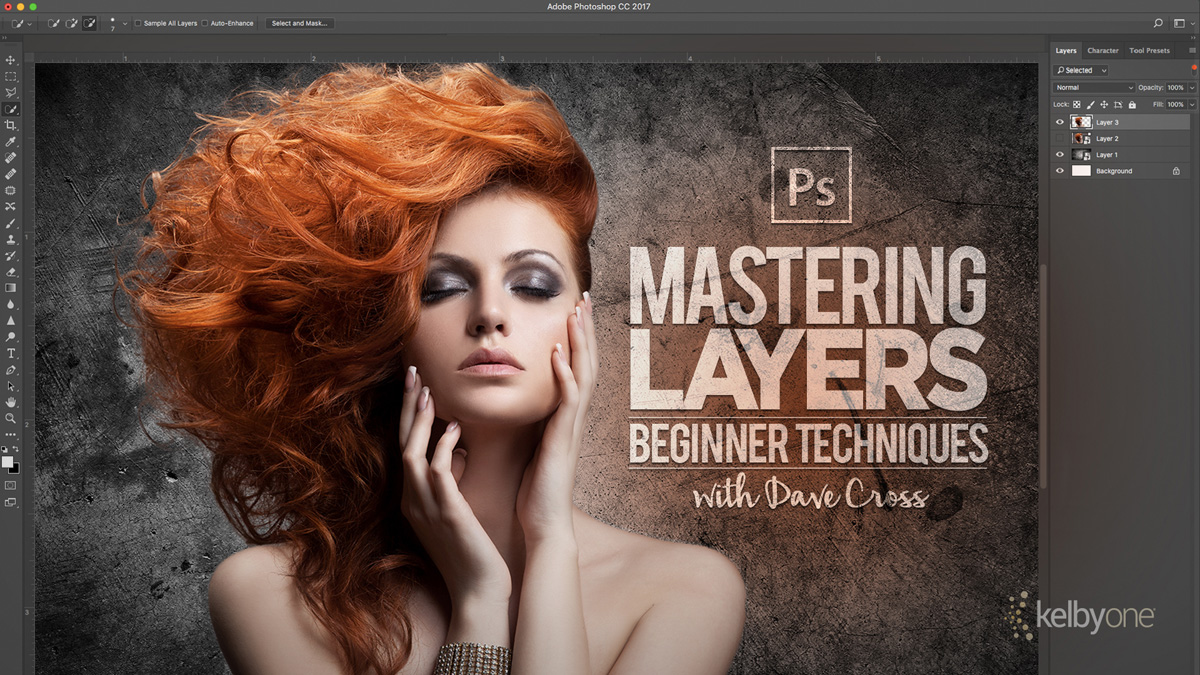
Finally an article about creative art in photography. Totally inspiring for artists who see little future in stand alone images that all have been taken over & over. Thank you for giving me this exciting start to my compositing day. Please sir may I have more!
Fantastic work! Sure made my mind wander off from the daily grind. Looks like a great resource for KelbyOne training ;)
I love this article and I am not surprised! I have copies of SUMERU and ULTIMA on my coffee table. I cherish the emotion and creativity in Nick Pederson’s work. Keep it flowing Nick!